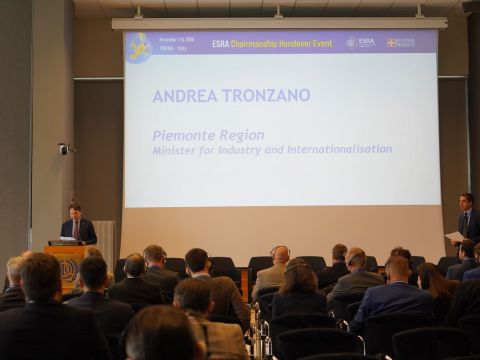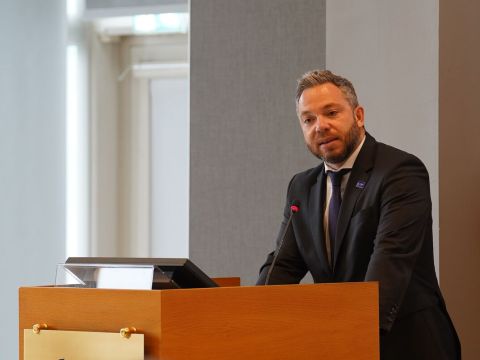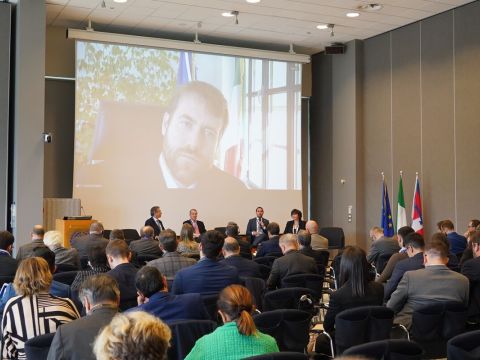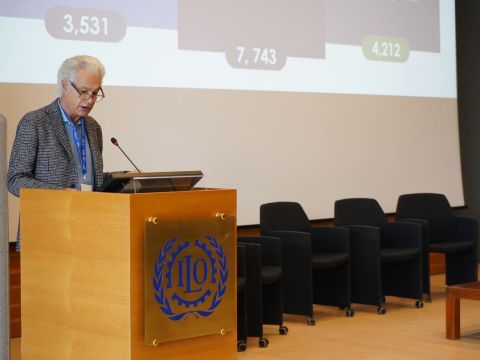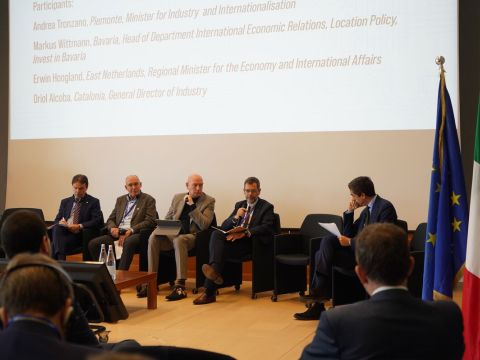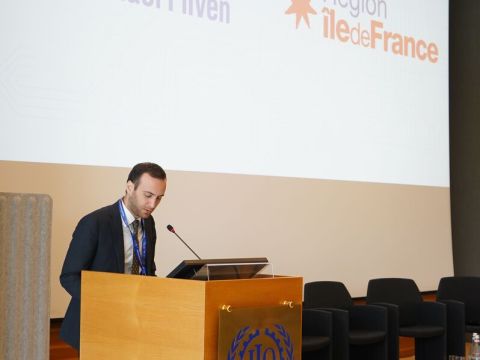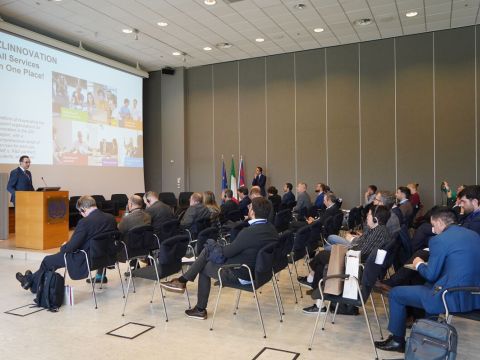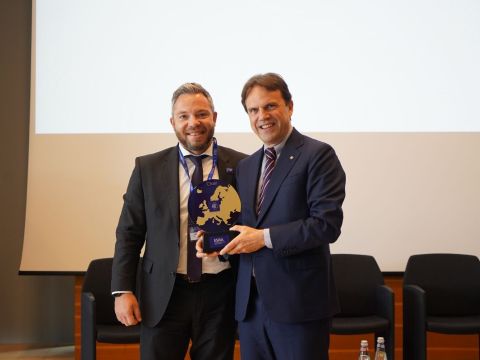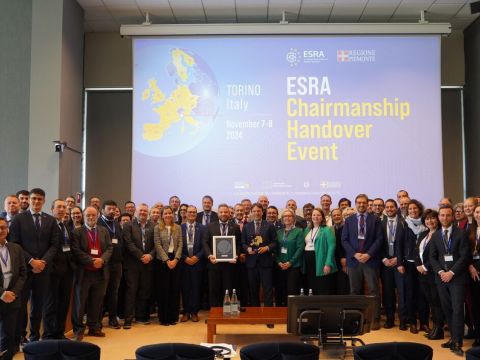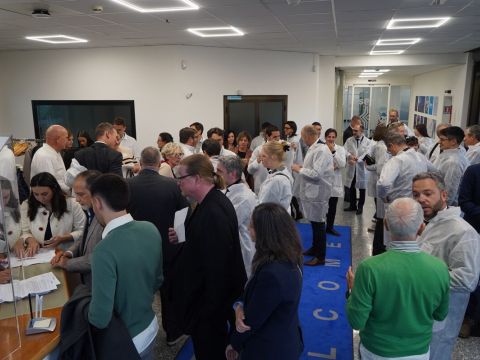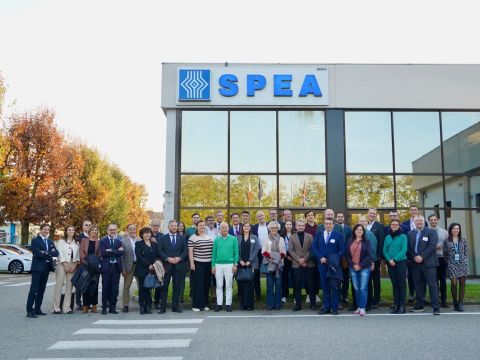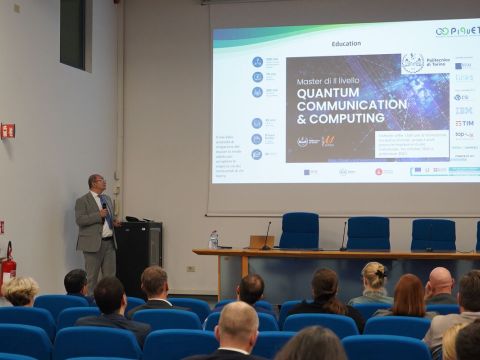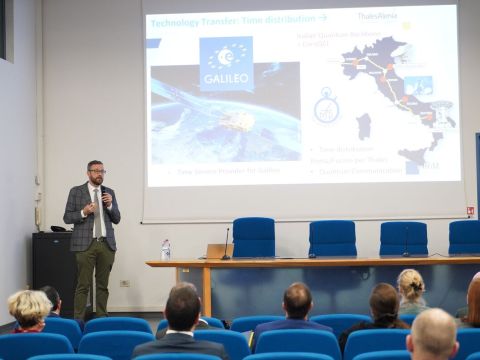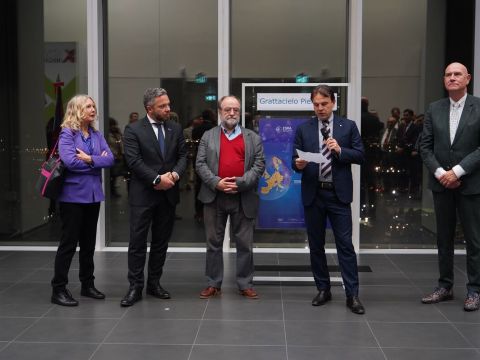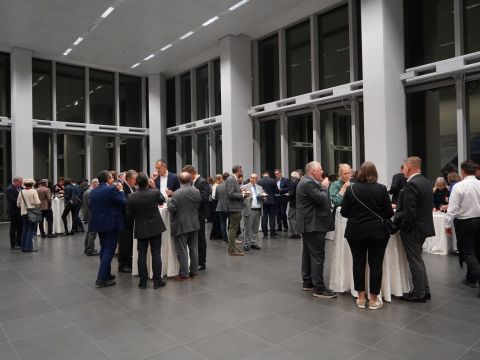Regione Piemonte (Italy) new Chair of the European Semiconductor Regions Alliance
The Handover Chairmanship Event, marking the transition of the Presidency of the European Semiconductor Regions Alliance (ESRA) from Saxony (Germany) to Piemonte (Italy), took place on 8 November 2024 in Turin.
This event was an important moment to reflect on the Alliance's progress one year after its establishment, and an opportunity to enhance the dialogue among regions, local and European Institutions, industry associations, and stakeholders within the semiconductor ecosystem. In line with the strategic documents already approved by the Alliance, the Presidency Trio — Piemonte (Italy), Saxony (Germany), and Catalonia (Spain) — launched a synergistic Vision in Turin. Through a shared approach and coordinated actions, the aim is to achieve strategic concrete objectives to be implemented during the Italian Chairmanship.
Piemonte, with the support of the Co-chairs for 2025, will focus on specific political objectives:
- Promote a place-based approach to ensure that Regions and their ecosystems play a significant and central role in shaping European policies. In the context of the potential new European strategy for semiconductors (the so-called EU Chips Act 2.0), recently outlined in the Draghi Report, and in anticipation of the initial discussions on the upcoming Multiannual Financial Framework (the EU’s seven-year budget), ESRA will be able to significantly influence decisions at the European level.
- Integrate European value chains, ensuring effective connections between Region’s specializations. Strengthening an integrated ecosystem along the semiconductor supply chain is an achievement to which the Alliance can contribute decisively.
- Foster cooperation among Regions in the field of talent/skills development, education, and training. Sharing best practices is essential to promote further collaboration, develop training programs, and attract new talents.
President Alberto Cirio and Minister Andrea Tronzano comment: “Piemonte is proud to be in a strategic position to contribute to the strengthening of ESRA and the European semiconductor value chain. We would like to congratulate Saxony for the excellent work done during its presidency, which has laid a solid foundation for the future of ESRA, and Catalonia for its election as Co-chair in 2025 and Chair in 2026. Assuming the Chairmanship of ESRA for Piemonte – continue President Cirio and Minister Tronzano – represents both a great honor and a significant responsibility. We aim to implement innovative initiatives and achieve concrete results for the Alliance, contributing to the European strategy outlined in the Chips Act, and the debate on its revision. Therefore, the attractiveness of investments in the microchip sector in Piemonte, as demonstrated by the recent cases of Silicon Box in Novara and Aixtron in Orbassano, marks a significant milestone for our Region, the European industrial ecosystem, and for the future of Europe”.
Michael Kretschmer, Minister President of the Free State of Saxony: “As the founding chairman, I would like to thank our European ESRA partner Regions for their excellent cooperation since the alliance was founded in 2023. Over the past year and a half, we have really achieved something very special. Together, we have built a network of more than 30 regions that is visible in Europe and, above all, in the institutions of the European Union. The Commission sees this network as an important dialogue partner for the coordination of the European Union's future strategy in microelectronics. It is good that ESRA's working structures are now being further strengthened and expanded. The network is making a decisive contribution to making Europe stronger and more sovereign in a key industry. I look forward to working with the new ESRA Chair team. As an important European production location for semiconductors, our ‘Silicon Saxony’ region can continue to provide important impetus for ESRA and Europe as a high-tech location.”
On their part and in words of Miquel Sàmper, Minister of Business and Labour of the Catalan Government: "Catalonia is honored, proud and feel the responsibility to carry out a good job as new co-chair of ESRA, working rigorously for the Alliance member Regions and for the competitiveness of the European semiconductors’ value chain. The commitment of Catalonia, one of the most vibrant and highly specialized Regions in Europe in the field of semiconductors, with ESRA and with the goals of the Alliance is absolute. Semiconductor industry is considered a strategic project in the Catalan Pact for Industry; ESRA is a core part the strategy to boost the industry; and Europe is and always has been part of our DNA. From the Catalan perspective, it’s the right time to position ESRA as a key partner of the European bodies in the implementation of the European Chip Act, placing the Regions at the very core of the semiconductor industrial policies. There is no digital and green transition without chips, and that’s why ESRA should be a coral voice to be heard.”
At the meeting in Turin, four more members were welcomed: Lombardy (Italy), Île-de-France (France), Pilsen (Czech Republic), and Zlìn (Czech Republic). Now the Alliance includes the following 35 Regions:
Andalusia (Spain), Auvergne-Rhône-Alpes (France), Baden-Württemberg (Germany), Bavaria (Germany), Basque Country (Spain), Carinthia (Austria), Catalonia (Spain), Centro (Portugal), East Netherlands (Netherlands), Flanders (Belgium), Flevoland (Netherlands), Hamburg (Germany), Helsinki (Finland), Hessen (Germany), Île-de-France (France, Ireland (Republic of Ireland), Lombardy (Italy), Lower Saxony (Germany), Madrid (Spain), Norte (Portugal), North Brabant (Netherlands), Piemonte (Italy), Pilsen (Czech Republic), Saarland (Germany), Saxony (Germany), Saxony-Anhalt (Germany), Schleswig-Holstein (Germany), Skåne (Sweden), South Moravia (Czech Republic), Styria (Austria) Tampere (Finland), Thuringia (Germany), Valencia (Spain), Wales (United Kingdom) and Zlìn (Czech Republic).
Piemonte Regional Ecosystem:
The semiconductor ecosystem in Piemonte comprises 181 companies, representing around 10% of all Italian companies in this sector. In 2022, these companies generated a turnover of approximately €1.7 billion, accounting for 24.3% of Italy's total market. The supply chain is highly concentrated in the Tier 1 segment – comprising manufacturers and suppliers of raw materials, semiconductors, and process machinery for the production and testing of electronic devices – with 7 global players generating 40% of the Region's turnover and remaining companies actively engaged in the Tier 2 and Tier 3 segments of the supply chain.
Piemonte hosts a complete value chain, characterized by high specialization and a strong capacity to compete globally in highly innovative sectors, with industry leaders in their fields, such as MEMC/Global Wafers, SPEA, Vishay, and CREA. The arrival of major new players like Silicon Box and Aixtron further underscores the Region’s attractiveness. Piemonte is also distinguished by a strong base of manufacturing companies in the mobility, aerospace, and automation sectors, positioning the Region as a key downstream market for the semiconductor industry. An integral part of this ecosystem is the Mesap Pole, which, as part of the Innovation Pole System supported by the Piedmont Region, has been driving innovation in mechatronics in Piemonte for 15 years.
From a scientific perspective, Piemonte boasts an outstanding academic and research system, featuring first-class research infrastructures (some of which are co-financed by the Region through the ERDF fund) and a strong culture of cooperation between institutions. In the field of microelectronics, more than 300 researchers are engaged in research and technology transfer activities, working within a network of universities and institutes, including INRIM, INFN, and the Links Foundation. Collaboration with companies is also expanding, particularly through initiatives launched by the Politecnico of Torino in the microelectronics sector, involving over 100 SMEs and more than 10 large companies.
